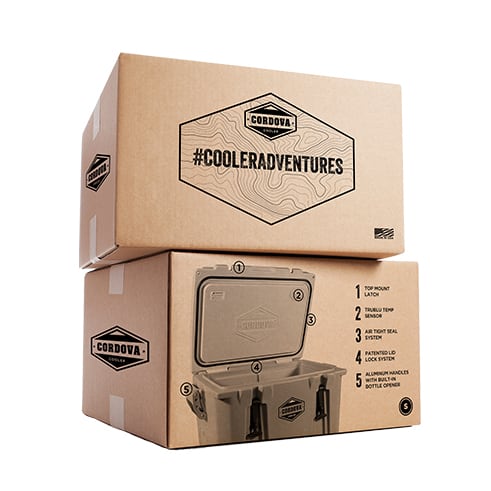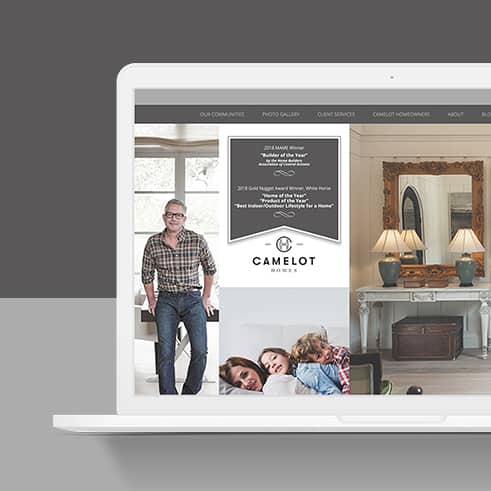Revolutionizing Identities: Exploring Rebrand Case Studies that Transformed Businesses
January 10, 2024
As we move into 2024, Commit Agency is excited to unveil a refreshed brand identity that aligns more closely with our core values and the essence of who we are as a company. This refresh isn’t just a change in aesthetics; it’s a reaffirmation of our foundational principles and a reflection of our evolution in the marketplace.
Our journey began with a dream to create a business that was not only financially rewarding but also personally enriching and fun. Through the highs and lows, our unwavering commitment to zero failure has made our successes even more gratifying. Over the years, this dedication has blossomed into the vibrant, meaningful, and forward-thinking brand that our partners depend on for their success.
Our four core values – Vibrant, Meaningful, Collaborative, Forward-Thinking – are more than just words. They are a commitment to excellence, a promise to lead with integrity, and a pledge to make a difference every day. These values are reflected in everything we do, from the work we produce to the way we engage with our partners and the community.
As we roll out our refreshed brand in 2024, we’re taking a look at some examples of successful rebrands over the years, including one from our client, Goodwill.
Goodwill | Expect The Unexpected
In late 2017, Goodwill of Central and Northern Arizona faced a conundrum: despite an increase in store foot traffic, their revenues were declining. Additionally, there was a lack of a cohesive marketing strategy to attract thrift shoppers. This challenge led them to partner with us, resulting in a remarkable turnaround.
We began with a comprehensive research study. This study targeted both individuals familiar with Goodwill and those who weren’t. The insights gained from this research were crucial. It revealed that Goodwill’s core supporters had shifted over time, with their primary motivation now being the excitement of discovering unique finds – “the thrill of the hunt.”
Armed with this information, Commit Agency repositioned the Goodwill brand. This rebranding was carefully crafted to resonate with this new understanding of their customer base, leading to a fresh marketing strategy. This strategy was brought to life through innovative television and radio advertisements that encouraged customers to “expect the unexpected.”
Moreover, Commit Agency didn’t stop at advertising. They also reimagined the customer experience to align with the redefined brand image, creating engaging experiences that spoke directly to their target audience. The impact of these strategic moves was significant and lasting. Within five years, Goodwill’s revenue more than doubled, a testament to the efficacy of the rebranding and marketing efforts.
The Power of Rebranding
In the dynamic world of business, a company’s brand is its strongest asset. Rebranding, the process of changing the corporate image of an organization, can be a pivotal step in maintaining relevance and competitiveness in an ever-evolving market. This article delves into the concept of rebranding, exploring its benefits and illustrating this transformation through compelling case studies.
Rebranding isn’t just about refreshing a logo or changing a company color scheme; it’s a profound transformation of a brand’s identity. It can redefine how a company is perceived, signaling growth, evolution, or a shift in values. Here’s why rebranding can be beneficial:
- Staying Relevant: Markets evolve, and consumer preferences change. Rebranding helps businesses stay aligned with current trends and consumer expectations.
- Differentiating from Competitors: In crowded markets, a fresh brand identity can help a company stand out.
- Reflecting New Goals or Values: As companies grow or change direction, rebranding can reflect new goals, values, or offerings.
- Overcoming Negative Perceptions: Rebranding can help a company distance itself from past controversies or negative associations.
- Targeting New Audiences: A rebrand can attract new demographics, expanding the customer base.
Case Studies of Successful Rebrands
Apple Inc. | From Complexity to Sleek Simplicity: In the late 1990s, Apple was struggling. Their rebrand, led by Steve Jobs, focused on simplifying product lines and creating a clean, minimalist aesthetic. This rebrand not only transformed their product design but also their marketing, emphasizing user-friendly technology and innovation. The result was a significant turnaround in Apple’s fortunes, making it one of the most valuable companies globally.
Old Spice | Reinventing a Classic: Old Spice, a classic brand known for its aftershave and grooming products, faced a challenge: its image was considered outdated, associated more with the previous generation. In 2010, they launched a new marketing campaign targeting a younger demographic. With humorous, viral ads and a new, modern product line, Old Spice rejuvenated its brand, significantly increasing its market share and appeal to younger consumers.
Burberry | Luxury Reinvented: Once associated with outdoor attire, Burberry faced a major brand dilution in the early 2000s. The brand’s signature check pattern was being overused, cheapening its perceived value. Under the leadership of Angela Ahrendts and Christopher Bailey, Burberry rebranded by focusing on high fashion and digital innovation. This shift not only restored its luxury status but also attracted a younger, more fashionable demographic.
Starbucks | More Than Just Coffee: Starbucks’ rebrand in 2011 was subtle yet impactful. They dropped the words “Coffee” from their logo, signaling a shift from being seen as just a coffee shop to a broader lifestyle brand. This allowed Starbucks to expand its product offerings and experiences beyond coffee, catering to a wider range of customer preferences.
LEGO | Rebuilding a Brand: In the early 2000s, LEGO faced near bankruptcy. The company’s rebranding strategy involved a return to its core – the classic LEGO brick. They streamlined their product lines and invested in successful franchises like LEGO Star Wars and the LEGO movie. This strategy reinvigorated their brand, making it relevant and exciting for a new generation.
Lessons from Rebranding Success Stories
Authenticity is Key
Successful rebrands maintain the core essence of the brand. Apple, for example, stayed true to its roots of innovative technology, just presented in a more modern way.
Understand Your Audience
Rebranding should be driven by a deep understanding of the target audience. Old Spice’s shift to a younger demographic was successful because it understood and catered to the humor and preferences of that age group.
Consistency Across Channels
A rebrand must be consistent across all channels – from marketing materials to product design. Burberry’s move into high fashion was echoed in every aspect of their business.
It’s More Than Aesthetics
While visual elements are important, rebranding is also about changing perceptions and experiences. Starbucks’ expansion beyond coffee was a strategic move that altered how customers interacted with their brand.
Innovation and Adaptability
LEGO’s return to its core product coupled with innovative partnerships showed that adaptability and innovation are crucial in a successful rebrand.
Rebranding can be a game-changer for businesses. It’s a strategic decision that requires a deep understanding of the market, audience, and the core values of the brand. When done correctly, rebranding can revolutionize a company’s identity, making it more relevant, competitive, and successful in the marketplace.




























